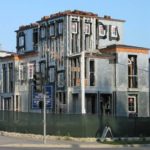
In a previous blog post, I talked about the challenges engineers may face when designing cold-formed steel and some resources available. When designing a building to the current building code, it can be helpful for engineers to understand the history of the different code requirements. This week I will discuss the code development history of CFS framed shear walls.
Prior to the 1997 Uniform Building Code (UBC), there were limited code provisions for design of cold formed steel-framed shear walls. The 1994 UBC had seismic R-factors for light-framed walls, but little else with respect to design or detailing. Code provisions were introduced in the 1997 UBC that included:
- Prescriptive gypsum board and wood-sheathed shear wall shear strengths for wind and seismic resistance based on tested CFS framed assemblies
- General provisions for the construction and design of these assemblies
- Additional provisions for projects in higher seismic zones, such as designing the end posts and overturning restraint for the amplified seismic force
- Provisions for tension-only bracing
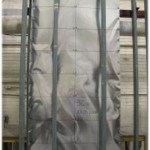
While these additions were helpful for engineers, the code still lacked provisions for steel-sheet sheathed walls and CFS framed diaphragms, and shear wall or diaphragm deflection equations were not available. Shear strengths for steel-sheet sheathed shear walls were added in the 2000 International Building Code (IBC), and Type I (segmented) and Type II (perforated) shear wall terminology and provisions were introduced in 2003.
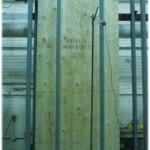
The AISI Committee on Framing Standards then developed the AISI Lateral Design standard (AISI-Lateral), which was published in 2004 and adopted by reference in the 2006 IBC. This standard introduced diaphragm shear strengths as well as deflection equations for wood and steel sheet-sheathed shear walls and wood-sheathed CFS framed diaphragms. The AISI Lateral Design Subcommittee developed the 2007 AISI Lateral Design standard (S213-07), which contained more robust provisions for diagonal strap braced CFS framed walls as well as introducing Canadian provisions for CFS framed walls based on testing performed after the 2004 edition.
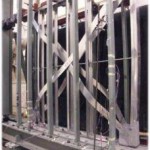
The latest Lateral Design standard is AISI S213-07-S1-09, which is the 2009 Supplement to S213-07 and is adopted by reference in the 2012 IBC. It adds additional shear strength values for steel-sheet shear walls and limits diagonal strap braced walls to a 2:1 aspect ratio unless the chord studs are designed for the end moments. The seismic response modification coefficient, R, is currently 6.5 for wood and steel sheet-sheathed assemblies, 2.0 for gypsum board sheathing and 4.0 for tension-only bracing.
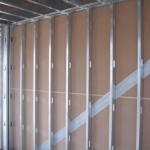
If you do not follow the Special Seismic Requirements in S213, the R value is limited to 3 and to Seismic Design Categories A through C (Steel Systems Not Specifically Detailed for Seismic Resistance).
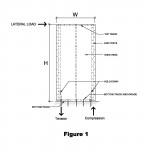
Steel wall design resources can be found in the CFSEI’s Cold-Formed Steel-Framed Wood Panel or Steel Sheet Sheathed Shear Wall Assemblies Design Guide. CFSEI also has numerous technical notes to aid the designer; the AISI Manual (D100-08) is similar to the AISC Steel Construction Manual as a reference and the AISI CFS Framing Design Guide (D110-07), which has several design examples for steel wall connections (bridging, window framing, etc.).
Currently, there is quite a bit of CFS lateral force-resisting assemblies research going on, including a CFS NEES project led by Professor Ben Schafer of Johns Hopkins University, “Enabling Performance-Based Seismic Design of Multi-Story Cold-Formed Steel Structures.”
How are you addressing the challenges of steel wall design? Let me know in the comments.
– Paul
What are your thoughts? Visit the blog and leave a comment!




this is not clear. i cant undestand